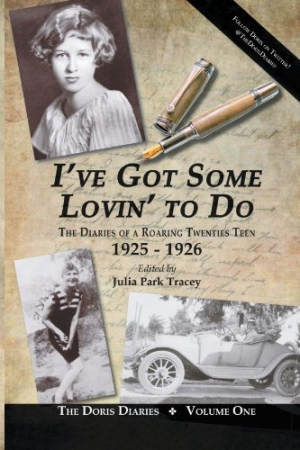It looks like you've stumbled upon a page meant to be read by our code instead of viewed directly. You're probably looking for this page.
I've Got Some Lovin' to Do
The Diaries Of A Roaring Twenties Teen, 1925-1926
Doris was a flirtatious, confident, fun-loving fifteen-year-old growing up in Portland, Oregon, in the 1920s. Decades later, her great niece found her diaries, and in them an authentic portrait of an early-twentieth-century teen with a thirst for adventure and a desire for romance.
In this first installment of Doris’s diaries, which she started in 1925, she shares, among other things, her frustrations at starting a new school, the boys she is forever falling in and out of love with, and her vacation to The Double-O Ranch.
What is most interesting about the range of entries is how vividly they capture the past. They are penned during Prohibition, and when Doris and her friends plan to go to a “tearoom” that is rumored to serve alcohol, she is excited at the possibility that the tearoom could get raided. She talks about having to “crank” the engine of her car, and refers to the shows and music, often played on a Victrola, that she loves.
Yet, at the same time, Doris’s accounts often depict universal moments in the life of a teenager from any era. She is angry and hurt when a friend flirts with the boy she likes, and nervous when it seems like her best friend might be changing. Doris pouts about her parents’ rules, and is frustrated by their inability to understand her. It is easy to picture a modern-day Doris, fretting about boys and clothes and whether anything exciting will ever happen.
The editor’s intention may be to publish Doris’s diaries in their entirety, but this installment feels as though it could be trimmed. Many entries capture similar moments and feelings, and Doris’s boy-crazy ramblings can get a bit tiring. Her character and the time could have been shown in a few less entries; perhaps then parts of the next installment could have been combined with this volume, and as a whole, depict more of her evolution. That said, Julia Park Tracey is sharing the reality of her great aunt’s experience, and the patterns that emerge are fairly telling.
In addition to pictures, also included are appendices of slang used at the time and pop culture references. These extras help the era and Doris come to life. Because Doris is so relatable, this first section of her diaries could be used to make history more “real” to students. Doris’s spirit and the novelty of seeing the time depicted realistically could appeal to readers of all ages, especially those who enjoy memoirs.
An afterword alludes to the next portion of Doris’s life, and those who have come to appreciate the 1920s teen will be eager to see her move forward into her future.
Reviewed by
Alicia Sondhi
Disclosure: This article is not an endorsement, but a review. The publisher of this book provided free copies of the book and paid a small fee to have their book reviewed by a professional reviewer. Foreword Reviews and Clarion Reviews make no guarantee that the publisher will receive a positive review. Foreword Magazine, Inc. is disclosing this in accordance with the Federal Trade Commission’s 16 CFR, Part 255.
